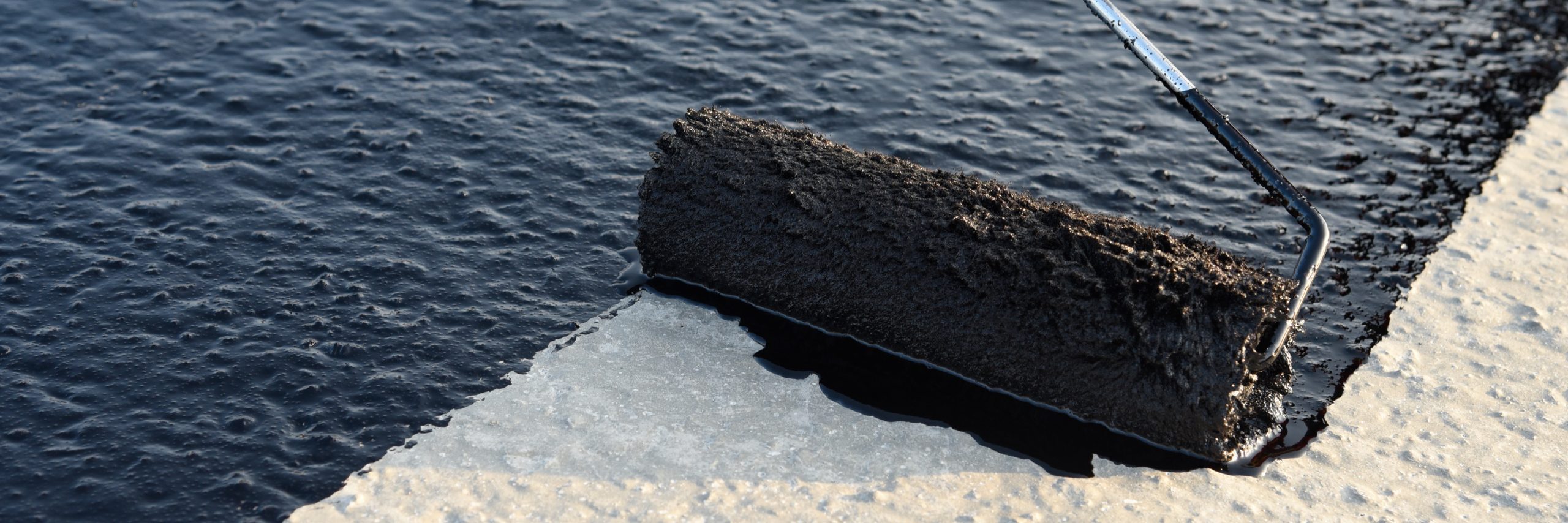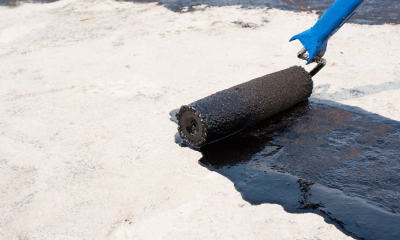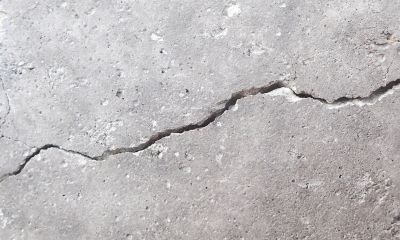A comprehensive guide on the applications and benefits of liquid waterproofing
Often, large structures are exposed to water – whether they are located nearby a water source and are at risk of seepage or they are erected out in the open, exposed to harsh rainwater and potential leaks. This is where the application of liquid waterproofing comes into use! Liquid waterproofing is an easy, affordable, and dynamic way of protecting industrial buildings, bridges, and structures from water and other corrosive liquids. We hope you find this guide useful, and if you’d like further information at any point during your reading, please call our structural waterproofing team on 01482 425250.
What is liquid waterproofing?
Liquid waterproofing, also known as liquid applied waterproofing, is a solution that involves applying a liquid coating to a surface to make it water-resistant. It is a highly effective preventative barrier for the interior and exterior of industrial buildings, bridges, and pipelines; along with other structural members made from concrete, metal, and/or wood. At CCUK, our specialist contractors frequently use liquid waterproofing within concrete repair and rehabilitation projects as an effective and long-lasting method of corrosion protection.
The reasons we choose liquid waterproofing are in abundance! Here is just a handful of its qualities:
- Capable of protecting hard to reach areas of buildings and structures;
- Does not require extensive surface preparation before application;
- Fast curing time;
- Flexible;
- Low-maintenance;
- Quick and simple to apply;
- Suitable for surfaces within all types of environments, including extremely hot or cold walls, flooring, and other foundational or structural assets [1].
For further information on the pros of structural waterproofing, please call our specialist contracting team on 01482 425250 or fill in our online form.
Why is liquid waterproofing needed?
Water infiltration including leaks, seepages, and external exposure (by rain, for example) can cause a plethora of problems for industrial buildings, bridges, and structures – anything ranging from cosmetic cracks to a failing in the foundations and overall structural integrity. What’s more, water damage can escalate quickly and what might seem like a small issue from the outside, can be the warning sign that a serious amount of damage is lurking behind the paint and top layers.
Preventative measures are needed on ageing or `at risk` buildings
A comprised commercial building can pose a serious health and safety risk – not only putting its working inhabitants in danger but causing extremely expensive, and sometimes irreversible damage. Any concrete specialist will recommend taking pre-emptive action on weakening buildings rather than waiting until the damage is done – it’s a far easier, cheaper, and safer option!
There are lots of reasons we consider a building to be `at risk` and in need of preventative measures such as liquid waterproofing – including the age of a building, the environment it is situated in, and if there are any signs of water damage present. Please call our specialist contracting team on 01482 425250 or fill out our online form to book your free feasibility survey, which will help identify whether your building needs extra protection from harmful water damage.
The signs of water damage
The signs and symptoms of water damage are far more difficult to spot in industrial warehouses, bridges, and pipelines, especially compared to a domestic setting. You may not be aware of water damage until a specialist surveys the area and identifies it, even. Here are common signs that we look out for:
- A sudden increase in water bills (if applicable);
- Damp patches and water where it shouldn’t be;
- Discolouration or staining;
- Foul odours;
- The sound of water dripping;
- Warping, bubbling, or a change in texture.
Where can liquid waterproofing be applied?
Liquid applied waterproofing is a highly effective way of creating an `impervious barrier` against water damage [2], both the interior and exterior of buildings and structures, above and below ground. Here are some common structural members that benefit from structural waterproofing.
Exterior
At CCUK, we specialise in liquid waterproofing for concrete structures. This involves creating a water-resistant barrier for:
- Buildings, such as liquid waterproofing for roofs;
- Bridges;
- Dams;
- Factories;
- Industrial storerooms and stock rooms;
- Marine – those situated nearby, on top of, or submerged in water;
- Pipelines – particularly those carrying a water supply or chemicals;
- Railways;
- Sewage works;
To view our recent and past projects, skip to here
Interior
The inside of buildings and structures, including:
- Beams;
- Columns;
- Flooring;
- Liquid waterproofing for walls.
To view our recent and past projects, skip to here
Which liquid waterproofing method is best?
If you’ve read this far into the guide, you’ll want to know how liquid waterproofing is done.
At CCUK, we offer an umbrella of liquid waterproofing services which we call our structural waterproofing solutions.
- Type A structural waterproofing involves applying `waterproof barrier systems`to vertical & horizontal concrete. At CCUK, we use fully bonded, liquid applied, and cementitious systems. This is our liquid waterproofing offering!
- Type B structural waterproofing involves using specialist applications on structures with a shell and joints. At CCUK, we use a combination of sealant chemicals, plate waterstop, and waterstop.
- Type C structural waterproofing focuses on drainage protection and diverting water to a suitable drainage point. At CCUK, we use BBA-approved drainage membranes and plaster mesh, along with a double drain.
To learn more about the types of solutions encompassed in these including Type A, Type B, and Type C structural waterproofing – skip to our designated page
Type A is regulated by the Liquid Roofing and Waterproofing Association which consists of leading manufacturers, approved contractors, and related material suppliers [3]. The Liquid Roofing and Waterproofing Association, or LRWA, offers technical guidance, training, and best practise tips. To find out more, skip to their website
Liquid waterproofing contractors near me
Preventative measures like liquid or structural waterproofing are much quicker and cheaper than repairing the damage of water infiltration – plus it means the safety of your building’s inhabitants such as family members, colleagues, or tenants will not be put at risk.
At CCUK, we are qualified concrete repair specialists who are fully trained in all types of structural rehabilitation & strengthening tasks, including liquid waterproofing.
To find out the price of liquid waterproofing, call 01482 425250 to book your free feasibility survey and cost analysis today, or visit our dedicated page for further information.
Suggested reading for you based on liquid waterproofing
What is Structural Waterproofing?
Different Types of Corrosion in Offshore Structures
A Brief Guide to Erosion Protection in Coastal Zones




